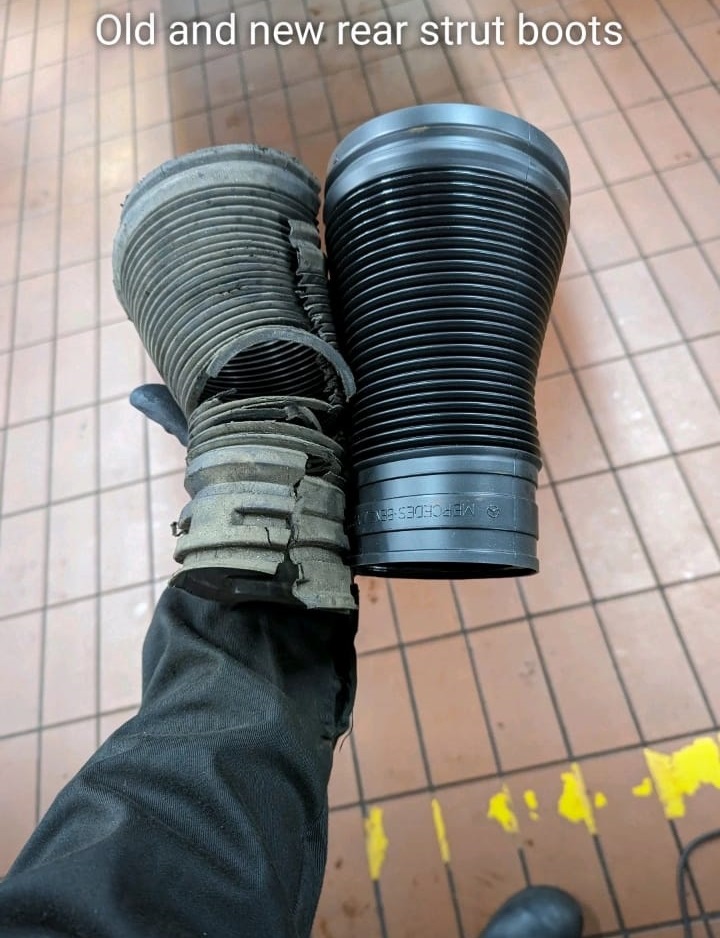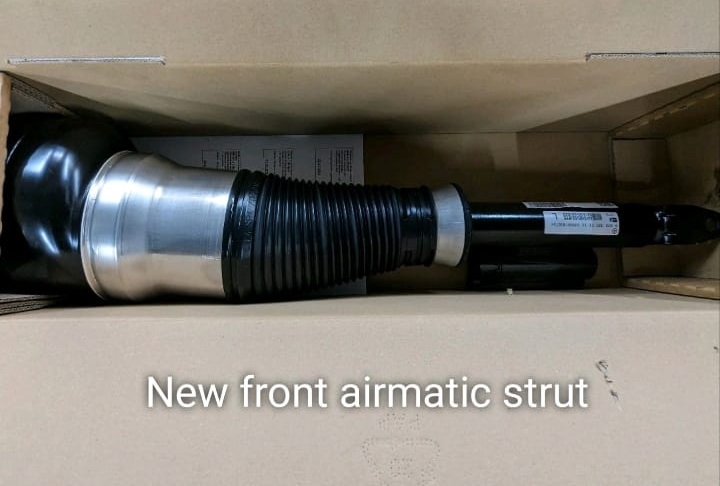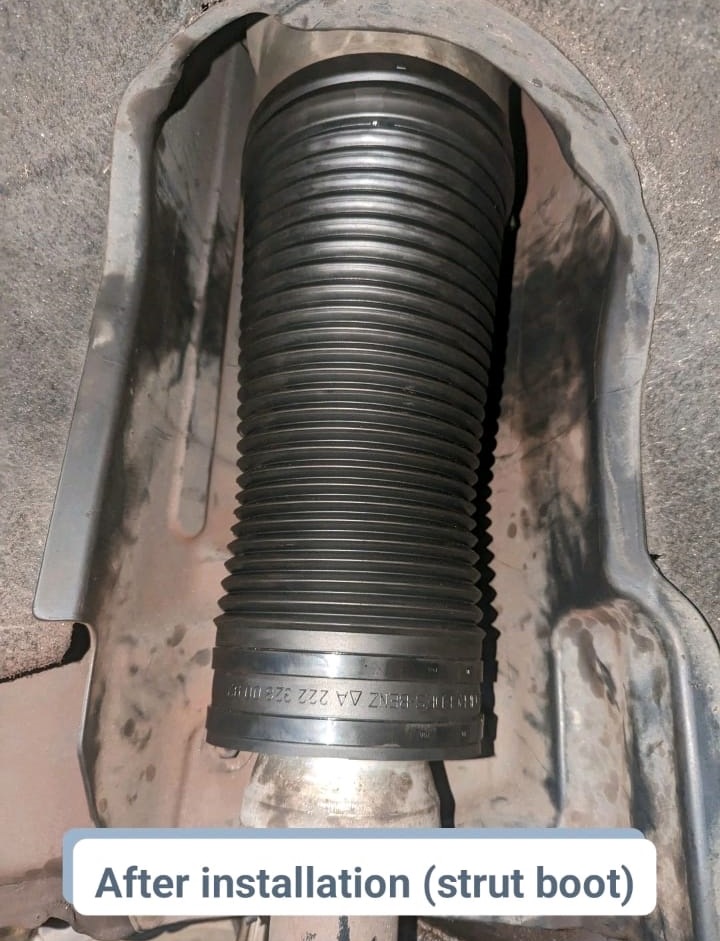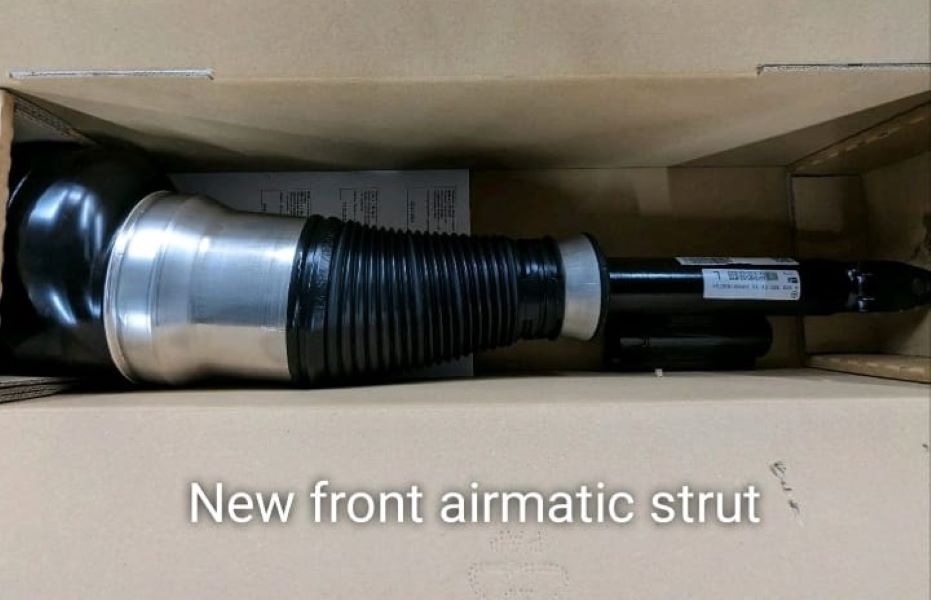Table of Contents
Suspension Issues in a Mercedes-Benz S400 W222: AIRMATIC Visit Workshop Case Study
The Mercedes-Benz S400 W222 is celebrated for its luxury, technology, and ride comfort. A key feature responsible for this comfort is the AIRMATIC air suspension system, which automatically adjusts ride height and damping for a smooth, controlled drive.
However, when the “AIRMATIC Visit Workshop” warning appears, it signals that the system is struggling to maintain suspension performance. Left unresolved, this can affect safety, handling, and long-term reliability.
In this case study, we’ll analyze a real-world S400 W222 suspension fault, covering the diagnostic process, root cause, repair steps, and final resolution.
Vehicle Profile
- Model: Mercedes-Benz S400 W222
- Customer Complaint: Front of the vehicle lowers approximately 20 minutes after parking
- Diagnostic Summary: AIRMATIC system fault codes, leaking front suspension struts, and damaged strut boots
Case Study: The “AIRMATIC Visit Workshop” Warning
Step 1: Initial Diagnostics
The vehicle was connected to Mercedes-Benz Xentry diagnostics for a quick test.
- – The system displayed the “AIRMATIC Visit Workshop” warning.
- – Several fault codes related to the suspension system were stored, confirming the issue was with AIRMATIC.
Step 2: Visual Inspection
A physical inspection of the suspension components revealed:
- – Front Strut Boots: Both front boots were torn and heavily worn.
- – Rear Strut Boots: Both rear boots were also damaged.
Damaged boots allow dirt and moisture to enter the struts, accelerating deterioration and causing potential leaks.
Step 3: Strut Leak Confirmation
Close inspection of the front suspension struts showed visible leaks.
- – The struts were no longer able to maintain internal pressure.
- – This explained why the front end dropped after parking leaking struts failed to hold air pressure, lowering the vehicle.


Step 4: Root Cause Analysis
The investigation concluded that the front suspension struts were defective due to leaks, and the damaged strut boots contributed to premature wear.
Root cause:
- – Leaking front struts → loss of ride height.
- – Damaged strut boots → exposure to dirt and moisture, accelerating failure.
Repair Process: Restoring the Suspension
1. Replacement of Front Suspension Struts
- – Both front struts were replaced with new, genuine Mercedes parts.
- – This restored the system’s ability to maintain ride height and stability.


2. Replacement of Rear Strut Boots
- – To prevent future contamination, both rear strut boots were replaced.
- – This ensured protection for the rear struts and extended their lifespan.

3. System Reset & Calibration
- – Fault codes were cleared using Xentry.
- – The AIRMATIC system was recalibrated to confirm correct ride height and damping performance.
4. Test Drive & Final Verification
- – After repairs, the car was test-driven.
- – The warning message disappeared, and the suspension performed normally without sagging after parking.
Symptom –> Cause –> Fix Table
| Symptom | Likely Cause | Repair Solution |
|---|---|---|
| Front lowers after parking | Leaking front struts | Replace both front suspension struts |
| AIRMATIC Visit Workshop warning | Fault codes stored in suspension ECU | Diagnose with Xentry, replace faulty components |
| Visible damage to strut boots | Wear and tear, exposure to elements | Replace damaged boots to protect struts |
| Vehicle bouncy or unsettled | Air loss from struts or dampers | Inspect for leaks, replace defective struts |
| Repeated AIRMATIC failures | Dirt/moisture entering struts | Replace boots, recalibrate system |
Explore More Mercedes Suspension Issues
For a deeper dive into suspension problems such as uneven ride height, AIRMATIC malfunctions, “Stop Vehicle Too Low” warnings, and vibration faults, visit our hub: Mercedes-Benz Suspension Issues – Symptoms, Causes & Fixes. There you’ll find grouped case studies, step-by-step diagnostics, symptom, cause, fix tables, and preventive tips to keep your Mercedes riding smoothly.
Preventive Measures for Owners
- 1. Regular Inspection: Have the suspension checked at each service interval.
- 2. Replace Boots Early: Damaged strut boots accelerate failure replace them before leaks occur.
- 3. Act on Warnings: Never ignore an AIRMATIC Visit Workshop alert; early intervention saves costly repairs.
- 4. Genuine Parts Only: Use OEM struts and boots for durability and proper system function.
- 5. Annual Leak Test: Ask your technician to check for leaks during annual maintenance.
FAQs
Q: Is it safe to drive with the “AIRMATIC Visit Workshop” warning?
A: Short distances may be possible, but it’s not recommended. A failed strut can compromise stability, braking, and comfort. Immediate inspection is advised.
Q: What causes Mercedes struts to leak?
A: Rubber wear, road debris, and damaged strut boots allowing dirt and moisture to degrade the seals.
Q: How much does it cost to replace AIRMATIC struts on a Mercedes S400 W222?
A: Replacement typically costs $1,000–$1,500 per strut (parts and labor), depending on region and workshop.
Q: Can damaged boots alone trigger AIRMATIC warnings?
A: Not directly, but damaged boots allow contaminants inside, which leads to strut leaks that trigger warnings.
Q: Do both struts need to be replaced at once?
A: Yes. Replacing struts in pairs ensures balanced handling and prevents uneven ride height.
Conclusion
The “AIRMATIC Visit Workshop” warning on the Mercedes-Benz S400 W222 was caused by leaking front suspension struts and damaged strut boots. Through systematic diagnostics, careful inspection, and replacement of defective components, the suspension system was restored to factory performance.
This case highlights the importance of:
- – Using diagnostic tools like Xentry for accurate fault detection.
- – Inspecting both mechanical and protective components like strut boots.
- – Acting promptly when warnings appear to avoid larger, more costly failures.
With the repairs completed, the S400 W222 once again delivered the smooth, adaptive ride that defines the Mercedes-Benz S-Class.
Author
Written by Mercedes Expert
With years of hands-on experience diagnosing and repairing Mercedes-Benz systems, he brings technical depth and practical case studies to help car owners, technicians, and enthusiasts troubleshoot complex automotive issues. His work focuses on clear repair guides, OEM-level procedures, and knowledge-sharing to empower both professionals and drivers.
Last Updated: September 2025






Leave a Reply